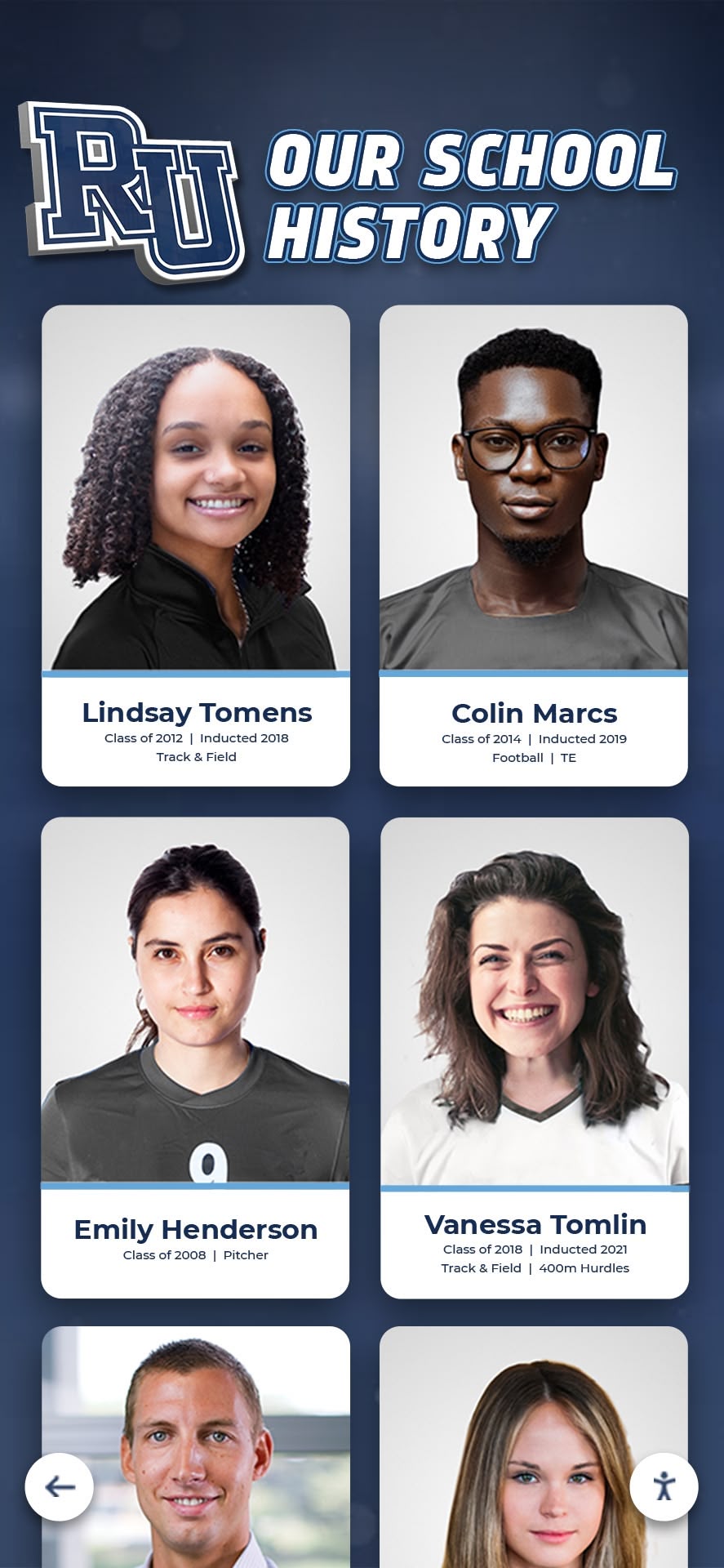Key Takeaways
Comprehensive guide to migrating historical records, photos, trophies, and achievement data to digital recognition displays. Learn best practices for content transfer, digitization strategies, and seamless transitions.
Whether you’re moving from physical trophy cases, static bulletin boards, or outdated digital systems, successful data migration requires careful planning, systematic execution, and proven strategies that protect historical accuracy while creating engaging digital experiences. Let’s explore the complete roadmap for transferring your recognition content to digital platforms.
Understanding the Data Migration Challenge
Before diving into the technical process, it’s essential to understand the scope and complexity of migrating institutional recognition content to digital displays.
Why Data Migration Matters for Recognition Programs
The decision to implement digital recognition displays often stalls not because of technology concerns, but because institutions feel overwhelmed by the prospect of digitizing years or decades of historical content. This hesitation is understandable—your physical displays represent institutional memory, alumni connections, and community identity that must be preserved accurately.
However, the migration process, when approached systematically, accomplishes more than simple content transfer. It provides opportunities to:
- Audit and organize scattered historical records
- Correct errors in existing documentation
- Enhance content with additional context and media
- Discover forgotten achievements and stories
- Create searchable databases from static displays
- Preserve deteriorating physical materials
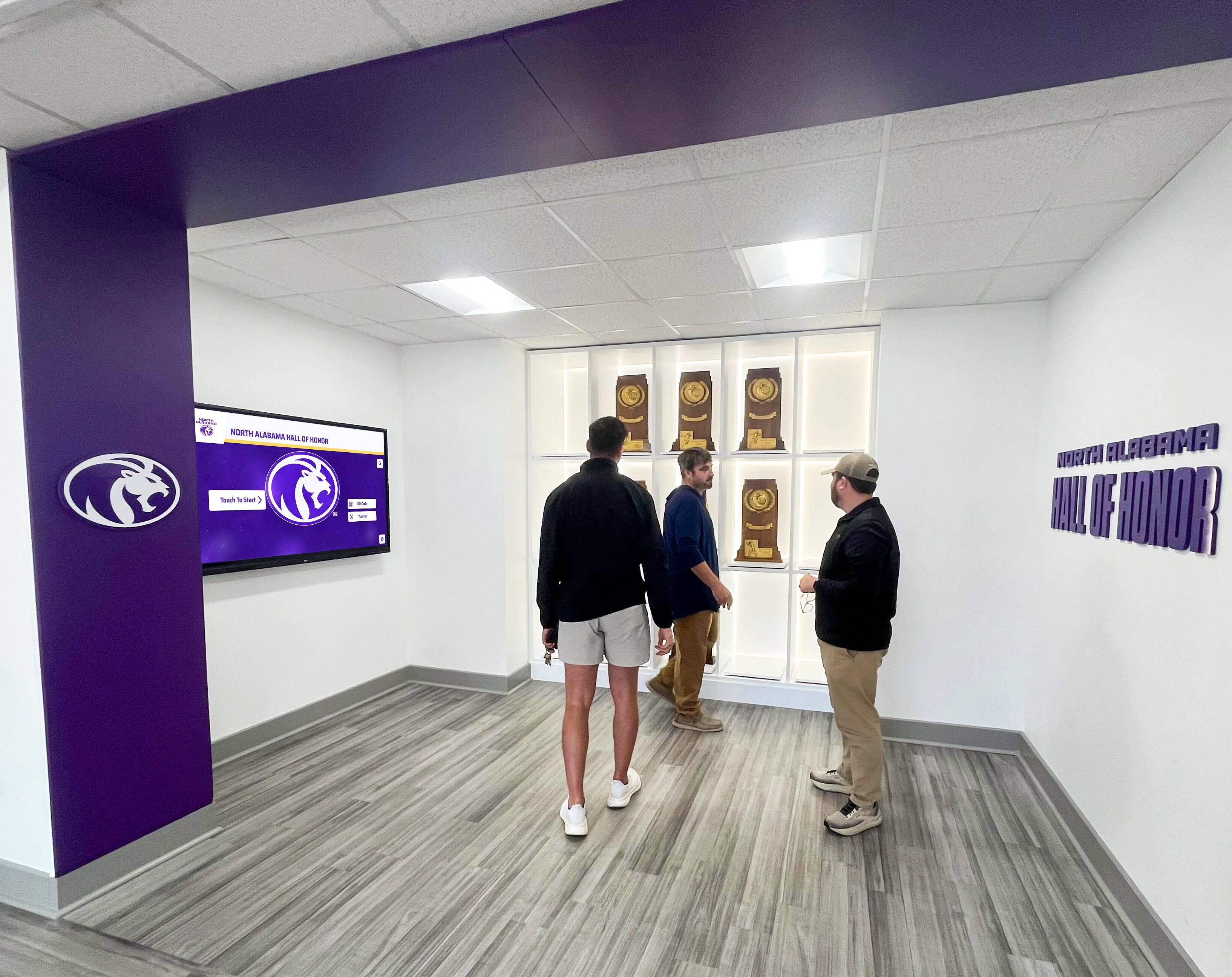
Common Content Types Requiring Migration
Schools and organizations typically need to migrate several distinct content categories:
Physical Recognition Items
- Trophy cases and awards
- Plaques and engraved plates
- Framed certificates and photos
- Banner displays
- Record boards and statistical tracking
- Championship memorabilia
Archival Documents
- Yearbooks and annuals
- Team photos and individual portraits
- Program booklets and event materials
- Newspaper clippings and press coverage
- Scrapbooks and albums
- Historical correspondence
Existing Digital Content
- Scattered photo libraries
- Database records in various formats
- Spreadsheets tracking achievements
- Word documents and PDFs
- Old website content
- Email announcements and newsletters
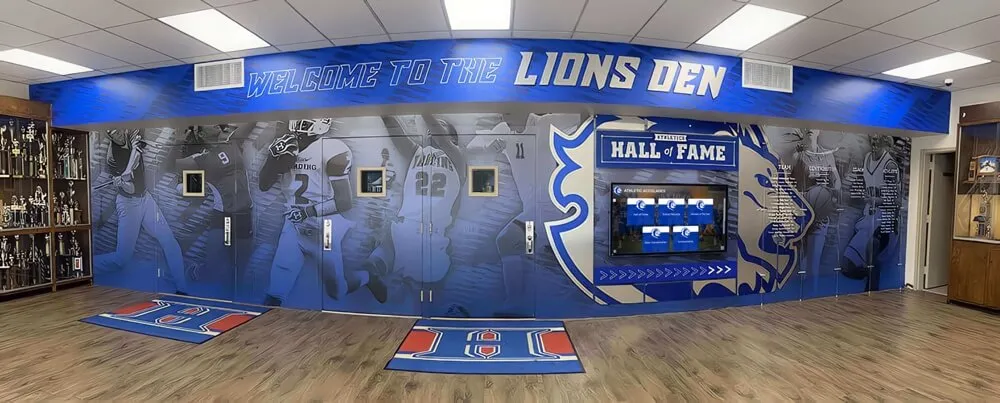
Understanding the full scope of content requiring migration helps institutions allocate appropriate time, resources, and budget to the transition process. Organizations implementing transitions from trophy cases to digital displays benefit from comprehensive content audits identifying all materials requiring digitization.
Phase 1: Assessment and Planning
Successful data migration begins with thorough assessment and strategic planning before any content digitization occurs.
Conducting a Comprehensive Content Audit
Start by systematically documenting all recognition content requiring migration:
Physical Inventory Process
- Photograph all trophy cases, displays, and recognition walls
- Document locations of recognition content throughout facilities
- List all plaques, trophies, and awards with descriptions
- Identify historical materials in storage or archives
- Note condition of physical items (deterioration, damage)
- Record any special requirements (fragile items, oversized materials)
Digital Asset Discovery
- Survey all existing digital photo libraries
- Identify database systems with recognition data
- Locate spreadsheets and documents with historical records
- Review archived website content
- Check email archives for announcements and records
- Investigate shared drives and cloud storage locations
Information Gaps Identification
- List missing photos or documentation
- Identify incomplete records
- Note areas requiring research or verification
- Flag content needing copyright or permission review
- Document accessibility of content (some materials may require retrieval from offsite storage)
This audit process typically reveals both more content than initially expected and significant gaps requiring additional research. Organizations implementing digital asset management for school districts find that comprehensive audits often uncover valuable historical materials that have been overlooked or forgotten.
Defining Migration Scope and Priorities
Not all content requires immediate migration. Strategic prioritization ensures efficient resource allocation:
Priority 1: Current and Recent Content
- Current year recognitions
- Recent 3-5 years of achievements
- Frequently accessed records
- High-visibility recognition categories
- Content supporting active alumni engagement
Priority 2: Historical Highlights
- Major championships and milestones
- Distinguished alumni and achievements
- Record-setting performances
- Significant institutional moments
- Content with strong emotional connections
Priority 3: Comprehensive Archives
- Complete historical records
- Every recognition recipient
- Detailed statistical archives
- Full team rosters and photos
- Comprehensive yearbook digitization
- Complete documentation preservation
Many institutions implement phased approaches, launching digital displays with priority content while continuing background digitization of comprehensive archives. This strategy enables faster time-to-value while ensuring thorough historical preservation proceeds systematically.
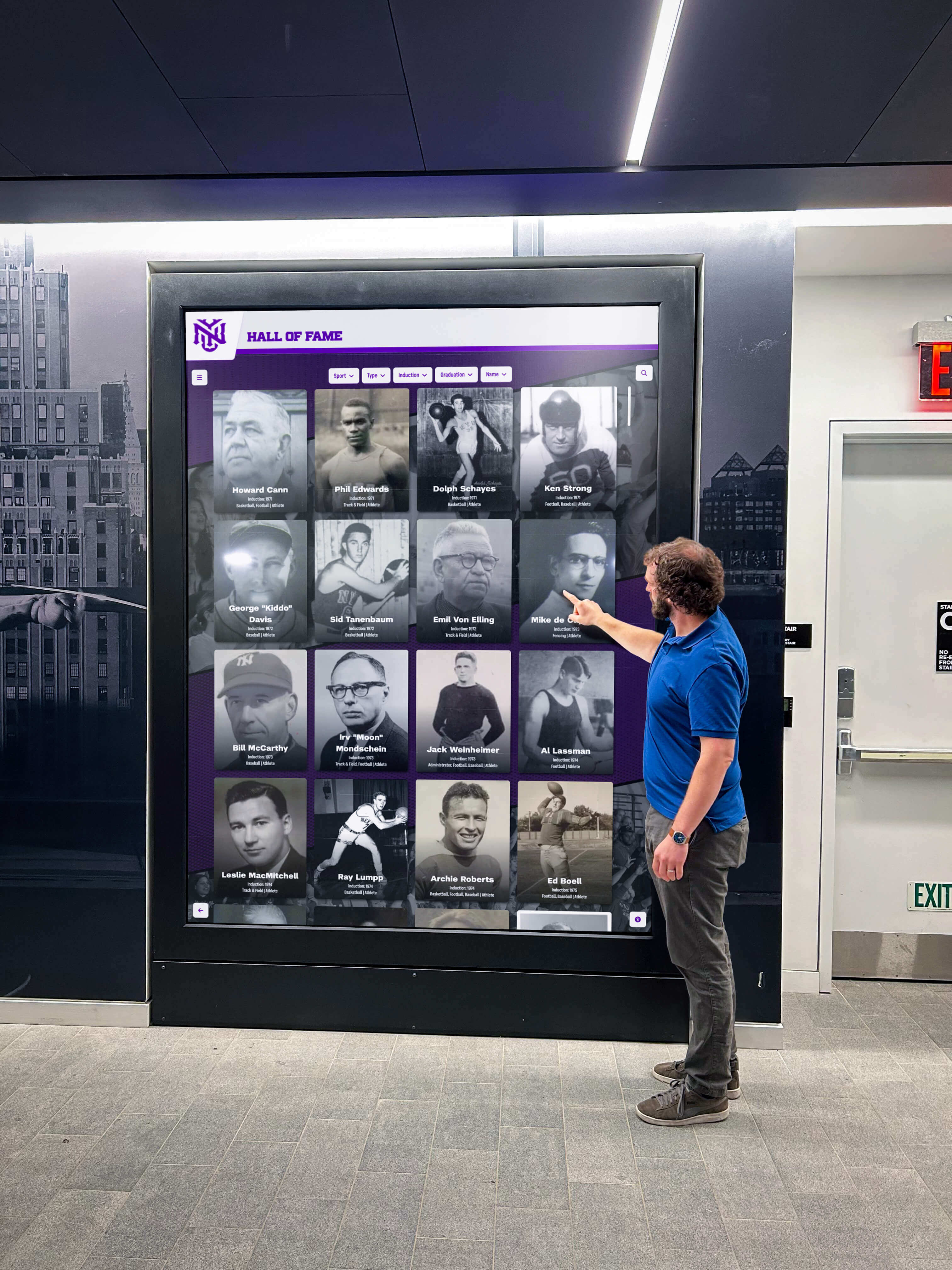
Establishing Data Standards and Structures
Before digitization begins, establish consistent data standards ensuring quality and usability:
Data Field Requirements
- Standard fields for all recognition types (name, year, achievement, category)
- Required versus optional information
- Data validation rules (date formats, name capitalization)
- Categorization taxonomies and tagging systems
- Metadata requirements for photos and documents
Naming Conventions
- File naming standards for photos and scanned documents
- Consistent terminology for achievement categories
- Standardized abbreviations and acronyms
- Guidelines for handling special characters and punctuation
Quality Standards
- Minimum photo resolution and format requirements
- Scanning specifications for documents
- Color accuracy and image processing guidelines
- Audio and video technical specifications
- Accessibility requirements (alt text, captions)
Organizations working with solutions like Rocket Alumni Solutions benefit from established data structures designed specifically for recognition content, reducing the need to create standards from scratch while ensuring compatibility with proven display templates.
Phase 2: Content Digitization Strategies
With planning complete, systematic content digitization transforms physical and scattered materials into organized digital assets.
Digitizing Physical Recognition Items
Physical trophies, plaques, and displays require photography and documentation:
Photography Best Practices
- Use consistent lighting and backgrounds
- Capture multiple angles for dimensional items
- Photograph plaques and engraving clearly
- Include context shots showing items in displays
- Create detail shots of specific information
- Maintain consistent image quality across collection
Documentation Requirements
- Transcribe all text from plaques and awards
- Record trophy or award descriptions
- Note dates, names, and achievements
- Document any inscriptions or dedications
- Capture dimensions and physical characteristics
- Record current location and condition
Special Considerations
- Handle fragile or valuable items with appropriate care
- Consider professional photography for high-value items
- Photograph items in controlled environments when possible
- Create backup documentation through multiple photos
- Consider 3D scanning for particularly significant items
Some institutions discover that physical trophy documentation creates unexpected opportunities—photographing three-dimensional awards from multiple angles can produce more engaging digital content than original static displays ever provided.
Scanning Archival Documents and Photos
Historical documents and photos require different digitization approaches:
Document Scanning Standards
Professional document scanning preserves historical records while creating accessible digital versions. According to industry standards, schools should use non-destructive scanning methods that protect original materials.
Technical Specifications
- Minimum 300 DPI resolution for documents
- 600 DPI for photos requiring enlargement
- Color scanning for original photos and color documents
- Grayscale adequate for black and white text documents
- TIFF or high-quality JPEG formats for archival preservation
- PDF creation for multi-page documents
Yearbook Digitization
- Use V-cradle scanning to protect book spines
- Capture full page spreads maintaining layout integrity
- Apply OCR (Optical Character Recognition) for searchability
- Index content by year, page, and category
- Create both archival and web-optimized versions
- Respect copyright and privacy considerations
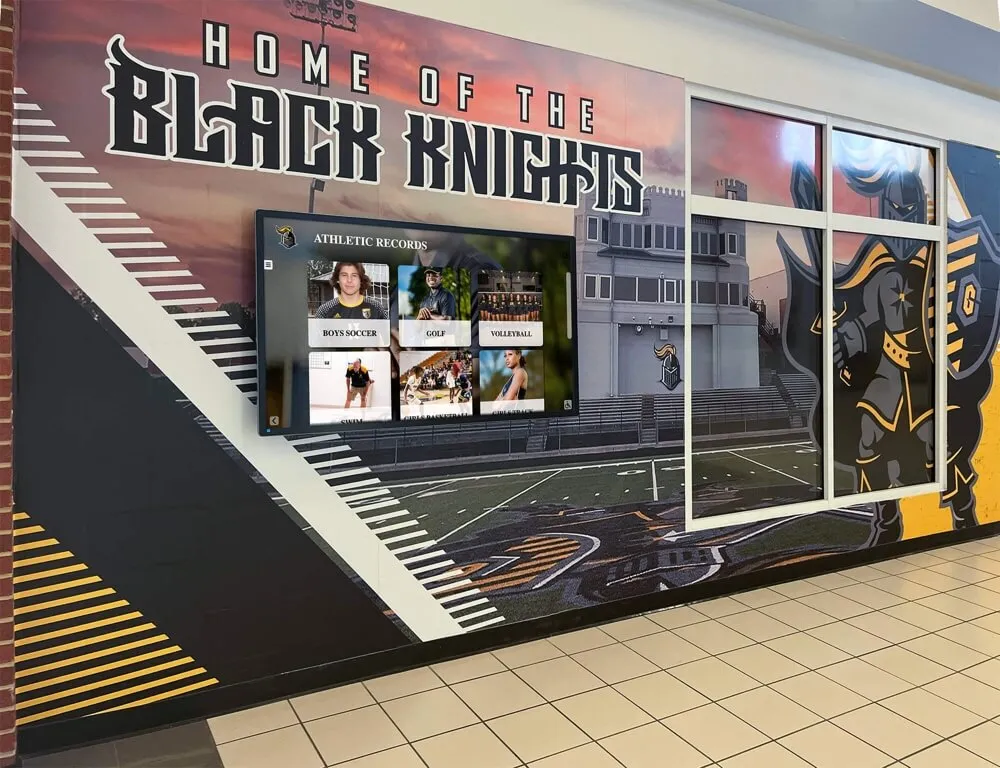
Schools undertaking yearbook digitization projects should note that professional services typically handle copyright research, privacy considerations, and technical specifications, ensuring compliance while delivering high-quality results.
Photo Restoration and Enhancement
Older photos often require enhancement to appear optimal in digital displays:
- Remove dust, scratches, and physical damage
- Correct color fading and discoloration
- Adjust exposure and contrast for clarity
- Crop for optimal digital display formats
- Maintain backup copies of unedited originals
- Document any restoration work performed
Converting Existing Digital Records
Many institutions already maintain digital records requiring format conversion and data cleaning:
Database Migration
- Export data from existing systems (student information systems, athletics databases)
- Map fields to new system requirements
- Clean data inconsistencies and duplicates
- Validate data accuracy and completeness
- Import to new recognition platform
- Verify successful transfer and data integrity
Spreadsheet Consolidation
- Identify all spreadsheets with recognition data
- Standardize formats and field names
- Merge duplicate information
- Fill information gaps where possible
- Convert to database-compatible formats
- Validate against original sources
Document and File Organization
- Gather scattered digital photos and documents
- Apply consistent naming conventions
- Organize into logical folder structures
- Tag and categorize content
- Remove duplicates and low-quality versions
- Create master archive with backup
This consolidation phase often reveals surprising inconsistencies—names spelled multiple ways, conflicting dates, or duplicated records—that require research and correction before migration to the new system.
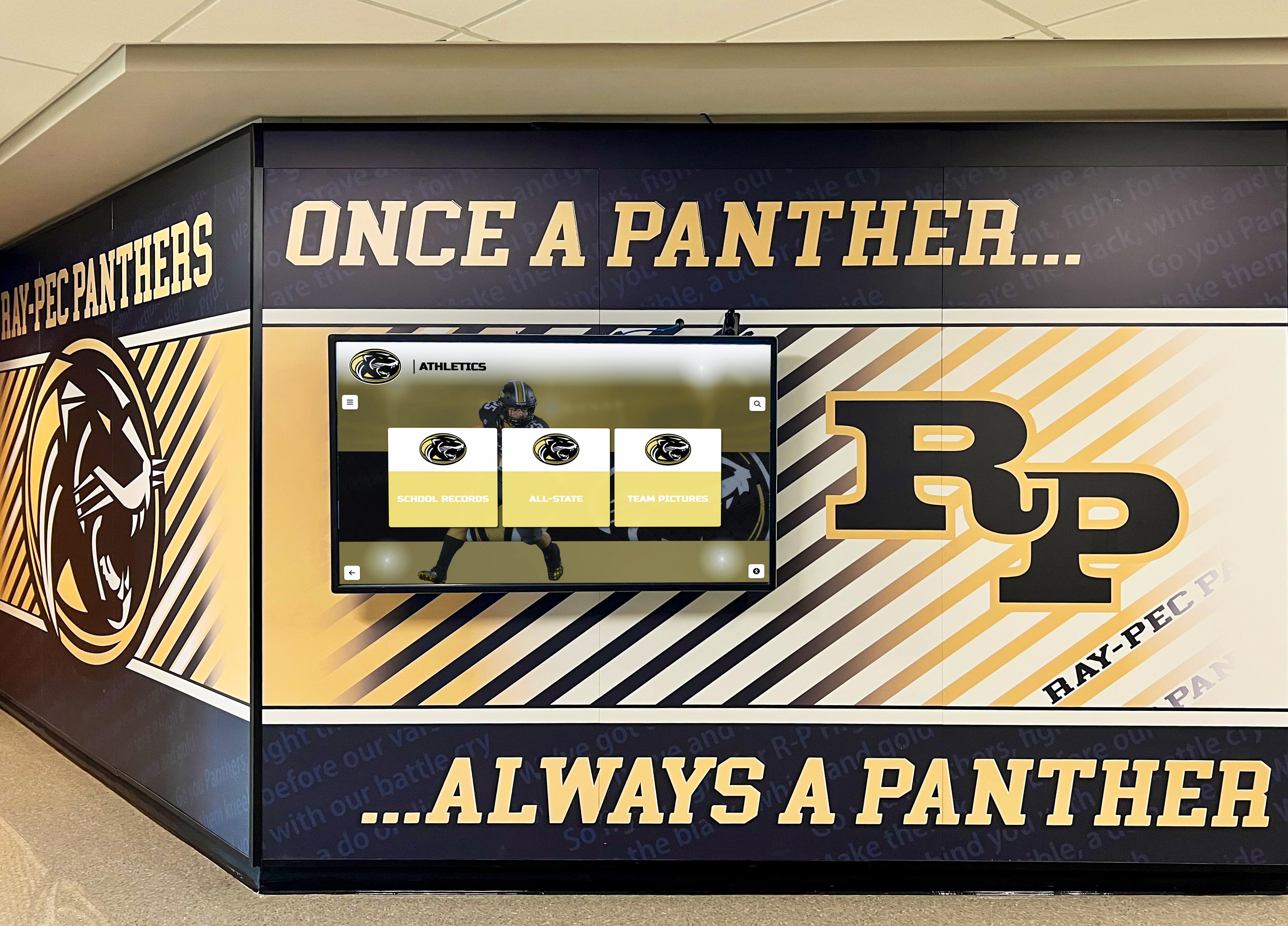
Phase 3: Data Preparation and Organization
With content digitized, systematic preparation ensures smooth transfer to recognition display platforms.
Creating Structured Data Records
Transform raw digitized content into structured database records:
Standard Recognition Record Components
- Individual or team name (with proper spelling and formatting)
- Achievement or honor received
- Year and specific date when possible
- Category and subcategory classification
- Description and context of achievement
- Associated photos and multimedia
- Related individuals (coaches, teammates, sponsors)
- Source documentation and verification
Enriching Content Beyond Original Displays
Digital migration provides opportunities to enhance content beyond original physical displays:
- Add biographical information and career details
- Include “where are they now” alumni updates
- Connect related achievements and individuals
- Provide historical context and significance
- Link to additional photos and media
- Include quotes and personal reflections
- Reference external resources and coverage
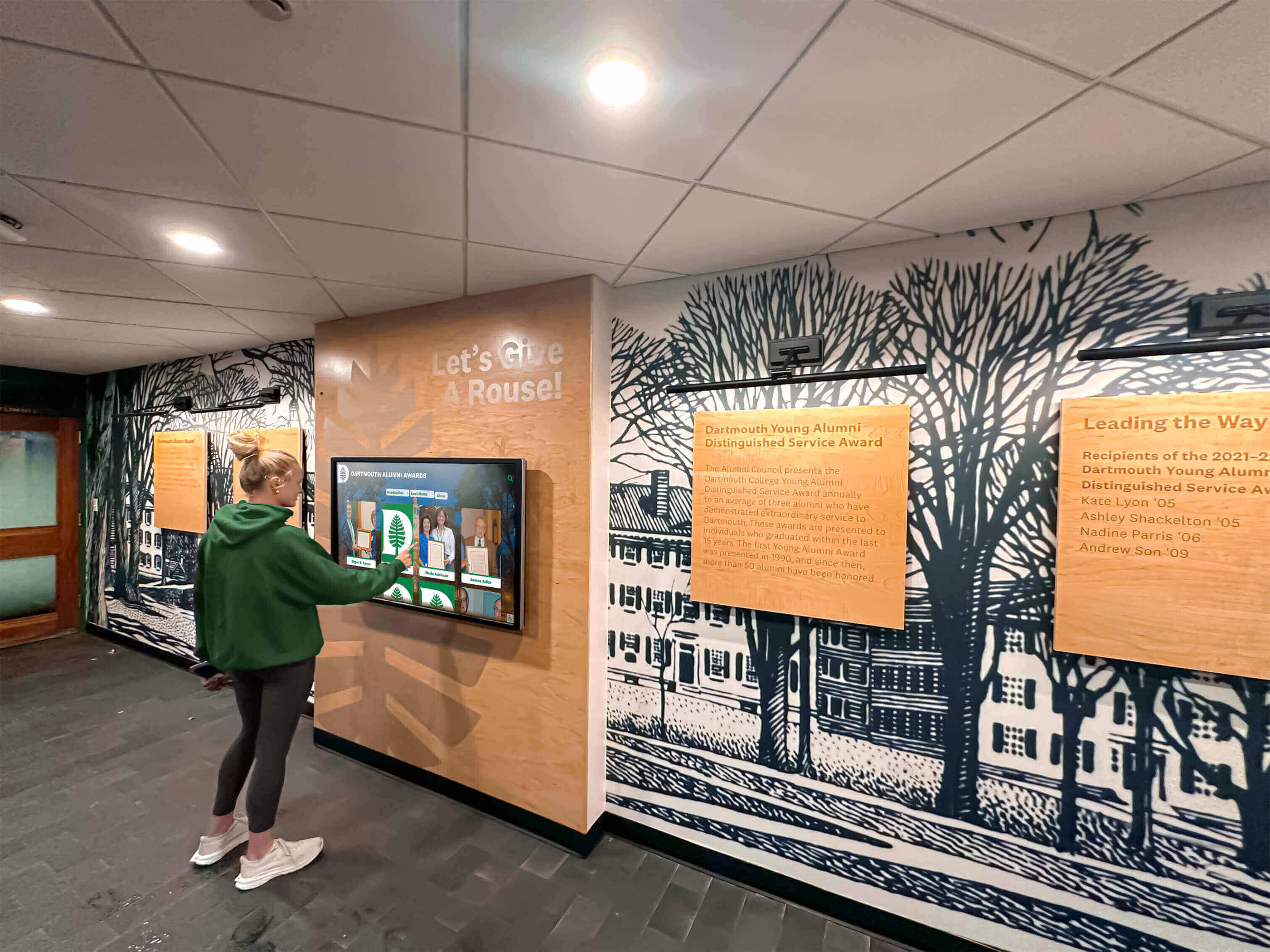
This enrichment transforms simple recognition lists into engaging narratives that connect current students, alumni, and community members to institutional history in meaningful ways. Schools creating interactive timelines of school history find that enhanced content creates significantly higher engagement than basic name-and-date listings.
Quality Assurance and Verification
Systematic quality control prevents errors from entering the recognition system:
Multi-Level Review Process
- Automated validation checking data completeness and format compliance
- Staff review verifying accuracy of facts and spelling
- Subject matter expert review for specialized content (athletic records, academic honors)
- Alumni and community feedback on historical accuracy
- Final approval before publication
Common Errors to Catch
- Name misspellings and inconsistent name formats
- Incorrect dates and year associations
- Misidentified individuals in photos
- Inaccurate statistics or records
- Miscategorized achievements
- Missing required information
- Broken connections between related content
Organizations implementing digital record board solutions report that quality assurance during migration prevents embarrassing errors while discovering and correcting mistakes that existed in original physical displays.
Organizing Content for Digital Display
Structure content to maximize engagement and usability in digital environments:
Logical Categorization
- Primary categories (Athletics, Academics, Arts, Service, Alumni)
- Subcategories within each primary area
- Time-based organization (by year, decade, era)
- Achievement-type groupings (championships, records, awards)
- Searchable metadata and tags
Cross-Referencing and Connections
- Link individuals to multiple achievements
- Connect teammates and cohorts
- Reference coaches, mentors, and sponsors
- Associate related events and milestones
- Create biographical connections
- Build alumni relationship networks
Display-Optimized Formatting
- Create multiple photo crops for different display contexts
- Prepare summary and extended content versions
- Format text for screen readability
- Design layouts for various screen sizes
- Optimize media files for performance
- Create mobile-friendly versions
Phase 4: Platform Migration and Transfer
With content prepared, the actual transfer to digital recognition platforms requires careful execution.
Selecting Transfer Methods
Different platforms support various import and migration methods:
Bulk Import Capabilities
- CSV or Excel file uploads for structured data
- Batch photo uploads with metadata matching
- API-based transfers for system-to-system migration
- Database import tools for large datasets
- Automated migration utilities
- Third-party integration services
Manual Entry for Special Content
- High-profile recognitions requiring custom formatting
- Complex multimedia content
- Items requiring special layout or design
- Content needing platform-specific features
- Records requiring individual verification
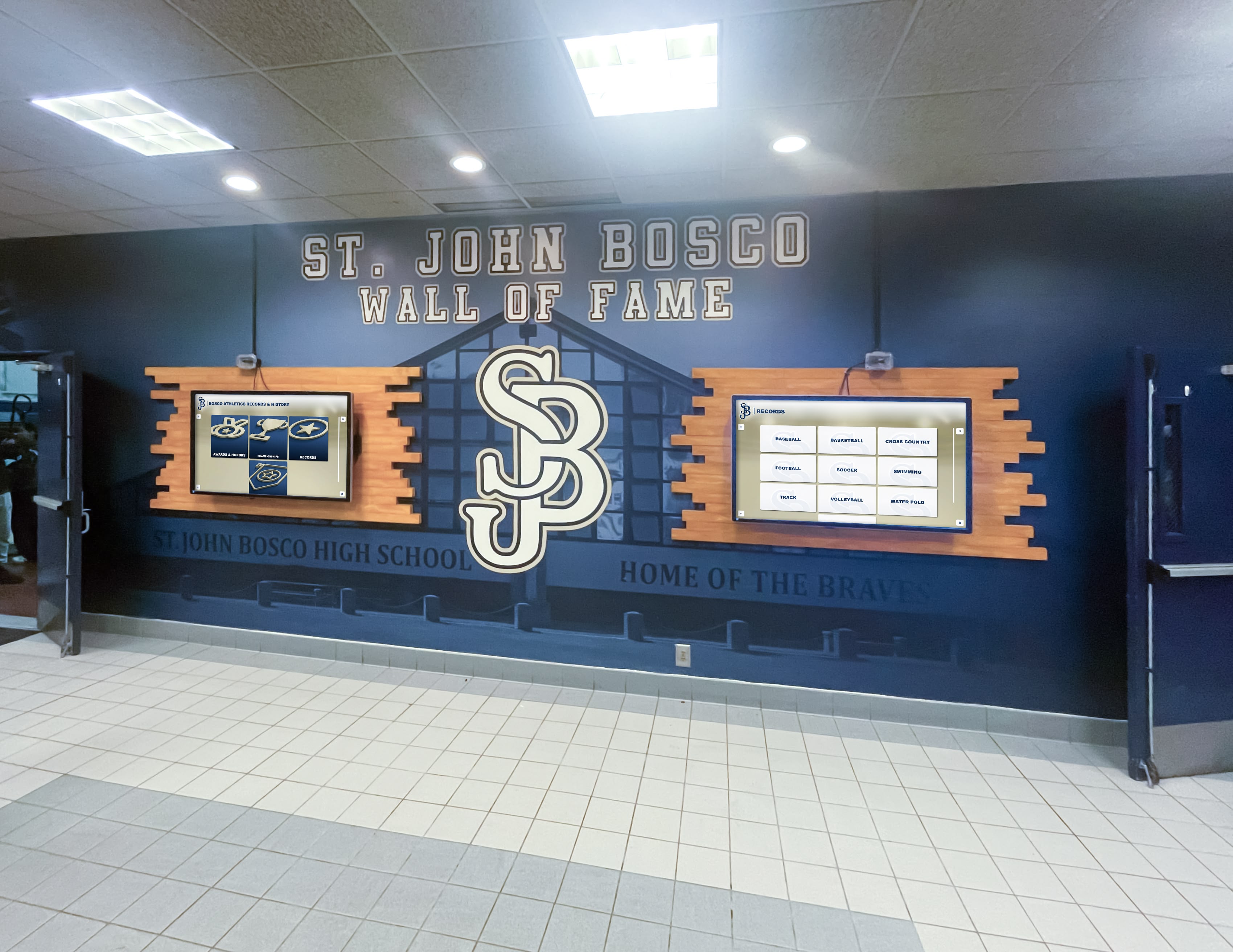
Platforms like Rocket Alumni Solutions provide structured import templates and migration support, significantly reducing the technical complexity of content transfer while ensuring data integrity throughout the process.
Executing the Content Transfer
Systematic transfer execution minimizes errors and enables efficient troubleshooting:
Phased Transfer Approach
- Test Migration: Transfer small sample dataset to verify process
- Validation: Review test content in display environment
- Process Refinement: Adjust based on test results
- Category Migration: Transfer content by category or time period
- Incremental Verification: Validate each batch before proceeding
- Final Transfer: Complete remaining content migration
- Comprehensive Review: Final verification of complete system
Transfer Best Practices
- Maintain detailed logs of all transfer activities
- Create backup copies before each major transfer
- Test thoroughly in staging environment before production
- Transfer during low-usage periods when possible
- Maintain original source files as archival backup
- Document any issues or anomalies encountered
- Plan rollback procedures if significant problems occur
Post-Migration Verification
Thorough verification ensures migration completeness and accuracy:
Verification Checklist
- All expected records present in new system
- Photos and media display correctly
- Text formatting appears as intended
- Links and cross-references function properly
- Search functionality returns accurate results
- Categories and filters work correctly
- Display layouts render properly on target hardware
- Mobile and online access functions appropriately
Spot-Checking Strategy
- Review high-profile or significant recognitions individually
- Randomly sample content across all categories and time periods
- Verify known problematic or complex records
- Test search functionality with various queries
- Navigate through related content and connections
- View content on actual display hardware and screens
Schools implementing touchscreen hall of fame systems benefit from testing content display on actual hardware before public launch, ensuring optimal appearance and functionality in real-world conditions.
Phase 5: Enhancement and Optimization
With basic migration complete, optimization enhances content effectiveness and user engagement.
Adding Multimedia and Rich Content
Digital platforms enable content enhancement impossible in physical displays:
Video Content Integration
- Game highlights and performance footage
- Interview clips and personal stories
- Award ceremony recordings
- Historical film and video archives
- Documentary-style profile pieces
- Celebration and event coverage
Audio Components
- Interview recordings and oral histories
- Radio broadcast clips
- Speech and presentation recordings
- Music and fight song associations
- Ambient audio for engaging displays
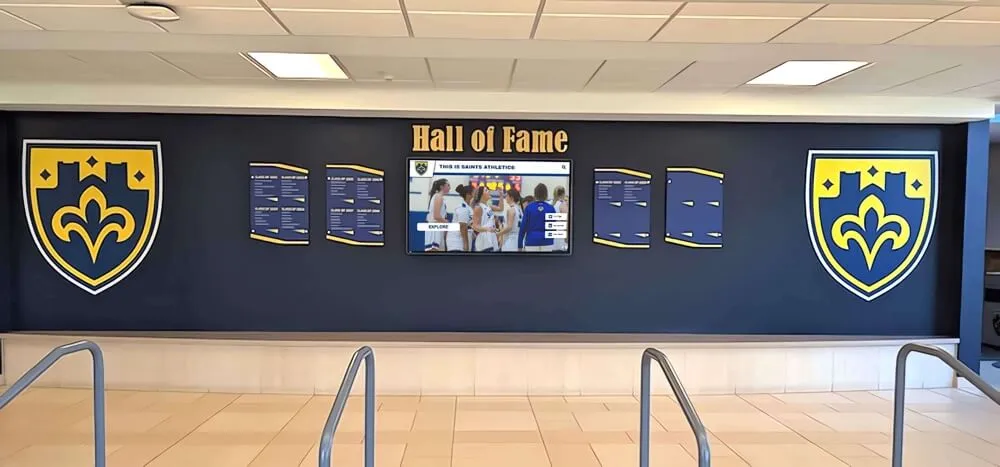
Interactive Elements
- Photo galleries and slideshows
- Timeline navigation and exploration
- Statistical tracking and visualization
- Comparison tools and leaderboards
- Social media integration and sharing
- Alumni contribution and update features
Optimizing for Search and Discovery
Ensure users can easily find relevant content:
Search Optimization
- Comprehensive keyword tagging
- Alternative name forms and nicknames
- Sport and activity synonyms
- Year and era associations
- Achievement type classifications
- Location and facility tags
Discovery Features
- Featured content and spotlights
- “On this day” historical highlights
- Random discovery and browsing
- Related content suggestions
- Category exploration pathways
- Trending and popular content
User Experience Refinement
- Intuitive navigation structures
- Clear visual hierarchies
- Appropriate information density
- Responsive touch interactions
- Accessibility for all users
- Mobile-optimized experiences
Organizations creating interactive alumni directories find that search optimization and discovery features dramatically increase user engagement compared to simple alphabetical listings.
Creating Engaging Display Experiences
Transform migrated content into compelling digital experiences:
Attract Mode Content
- Eye-catching photo slideshows
- Video highlight reels
- Scrolling recognition listings
- Statistical leaderboards
- Anniversary and milestone callouts
- Upcoming events and ceremonies
Interactive Exploration
- Touch to explore detailed profiles
- Filter and sort by various criteria
- Compare statistics and achievements
- Navigate relationship networks
- View historical timelines
- Access multimedia content
Contextual Storytelling
- Era and period context
- School history connections
- Community impact narratives
- “Where are they now” updates
- Historical photos and artifacts
- Oral history and interviews
Phase 6: Ongoing Management and Growth
Successful data migration isn’t a one-time project but the foundation for continuous content growth and improvement.
Establishing Content Update Workflows
Create sustainable processes for ongoing content addition:
Regular Recognition Addition
- Streamlined submission processes
- Quick-approval workflows
- Standardized data entry
- Scheduled publication cycles
- Announcement coordination
- Social media integration
Historical Content Expansion
- Continued archive digitization
- Alumni submission programs
- Community contribution opportunities
- Oral history collection
- Photo and document donations
- Research and verification projects
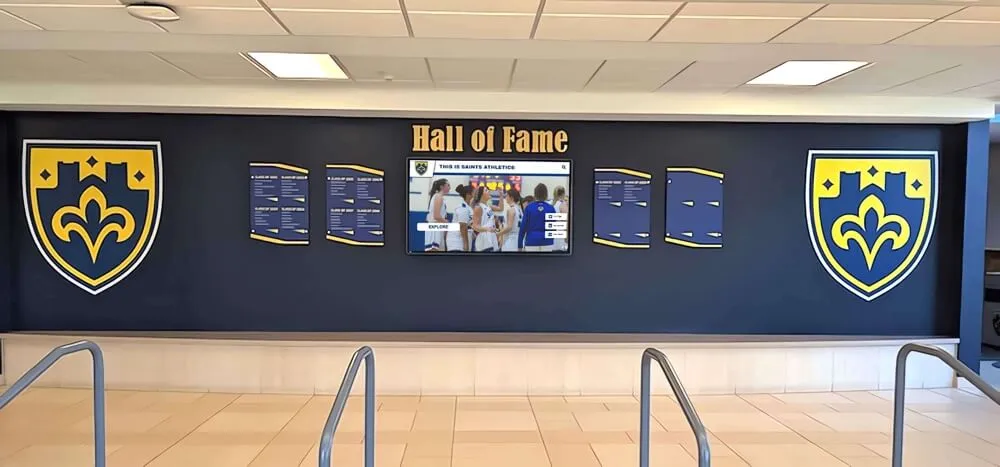
Content Enhancement Projects
- Adding missing photos
- Enriching biographical information
- Incorporating newly discovered materials
- Updating “where are they now” information
- Connecting related content
- Improving metadata and searchability
Building Alumni and Community Engagement
Leverage migrated content to strengthen connections:
Alumni Contribution Programs
- Profile update submissions
- Photo and document sharing
- Story and memory contributions
- Event photos and coverage
- Career update notifications
- Reunion coordination support
Community Involvement
- Local historian partnerships
- Historical society collaborations
- Volunteer research programs
- Photo identification events
- Oral history recording projects
- Document preservation initiatives
Schools implementing alumni engagement through digital recognition report that migration to digital platforms often reignites alumni interest and participation, with graduates excited to see their achievements preserved digitally and eager to contribute updates and additional content.
Measuring Success and ROI
Track metrics demonstrating migration value:
Engagement Metrics
- Display interaction frequency and duration
- Content views and searches
- Popular recognition categories
- Peak usage times and patterns
- User navigation pathways
- Social media shares and engagement
Operational Benefits
- Time saved on recognition updates
- Reduction in printing and physical display costs
- Expansion of recognition capacity
- Improved data accuracy and completeness
- Enhanced searchability and access
- Preservation of deteriorating physical materials
Community Impact
- Alumni engagement levels
- Donation and giving correlations
- School pride indicators
- Website traffic increases
- Media coverage and visibility
- Community event attendance
Common Migration Challenges and Solutions
Understanding typical obstacles helps institutions prepare effective responses:
Challenge: Overwhelming Content Volume
Solution: Implement phased migration with clear priorities. Launch displays with recent content and high-priority historical highlights while continuing comprehensive digitization in the background. This approach delivers early value while ensuring thorough long-term preservation.
Challenge: Missing or Incomplete Information
Solution: Flag incomplete records and establish research processes. Leverage alumni networks and community members to fill gaps. Accept that some historical information may be permanently lost, and document records as thoroughly as possible with available information.
Challenge: Photo Identification Difficulties
Solution: Create collaborative identification projects engaging alumni and community members. Host photo identification events where older graduates can help identify individuals in historical photos. Use social media groups for crowdsourced identification.
Challenge: Budget Constraints for Digitization
Solution: Explore grant funding for historical preservation projects. Consider volunteer programs engaging alumni, students, and community members. Implement phased approaches spreading costs over multiple years. Prioritize most valuable and most endangered content first.
Challenge: Technical Complexity
Solution: Partner with providers offering migration support and services. Solutions like Rocket Alumni Solutions often include migration assistance as part of implementation, reducing technical burden on institutional staff while ensuring professional results.
Challenge: Staff Time and Expertise Limitations
Solution: Consider professional digitization services for large-scale scanning and photo work. Outsource specialized tasks while keeping institutional knowledge work internal. Use student workers, volunteers, or community service programs for appropriate tasks.
Technology Partner Selection for Migration Support
Choosing recognition platforms with robust migration support accelerates implementation:
Key Migration Support Features
When evaluating digital recognition platforms, prioritize migration-friendly capabilities:
Import and Integration
- Bulk data import tools
- Multiple format support (CSV, Excel, databases)
- Photo batch upload capabilities
- API availability for custom integration
- Pre-built integrations with common school systems
- Flexible data mapping tools
Migration Services
- Professional content migration assistance
- Scanning and digitization services
- Data cleaning and preparation support
- Quality assurance and verification
- Training on content management
- Ongoing technical support
Long-Term Sustainability
- Intuitive content management interface
- User-friendly update processes
- Cloud-based accessibility
- Regular platform updates and improvements
- Reliable backup and data protection
- Data export capabilities
- Migration path to future platforms
Organizations working with comprehensive solutions like Rocket Alumni Solutions benefit from purpose-built platforms designed specifically for educational recognition needs, with proven migration processes, template libraries, and experienced support teams that have successfully migrated thousands of institutional recognition programs.
Building Your Migration Timeline
Realistic timeline planning ensures manageable progress and sustainable execution:
Typical Migration Timeline Components
Phase 1: Planning and Assessment (2-4 weeks)
- Content audit and inventory
- Scope definition and prioritization
- Team formation and role assignment
- Budget and resource allocation
- Technology platform selection
- Project plan development
Phase 2: Digitization and Preparation (6-16 weeks)
- Document and photo scanning
- Trophy and display photography
- Data extraction and consolidation
- Content enhancement and enrichment
- Quality assurance and verification
- Data structuring and organization
Phase 3: Platform Setup and Migration (2-6 weeks)
- System configuration
- Template customization
- Test migration and validation
- Content transfer and import
- Display installation and setup
- Staff training
Phase 4: Launch and Optimization (2-4 weeks)
- Public launch preparation
- Initial content publication
- Community announcement and promotion
- Feedback collection and response
- Content refinement and adjustment
- Performance monitoring
Phase 5: Ongoing Operations (Continuous)
- Regular content additions
- Historical expansion projects
- User engagement programs
- System optimization
- Community contribution management
Total migration timelines typically range from 3-6 months for focused implementations to 1-2 years for comprehensive historical digitization projects. Most institutions successfully launch public-facing displays within the first 2-3 months while continuing background historical content development.
Conclusion: From Migration to Transformation
Data migration to digital recognition displays represents far more than technical content transfer—it’s an opportunity to rediscover institutional history, preserve deteriorating materials, enhance recognition with rich multimedia, and create engaging experiences connecting current and future community members to legacy and tradition.
While the migration process requires careful planning, systematic execution, and sustained effort, the resulting transformation delivers lasting value: unlimited recognition capacity, easy ongoing updates, enhanced alumni engagement, preserved historical materials, and dynamic displays that honor past achievement while celebrating current excellence.
The most successful migrations combine clear vision, realistic planning, appropriate resources, and the right technology partners. Whether institutions choose to handle migration internally, outsource digitization services, or partner with comprehensive providers offering end-to-end support, the key is beginning with thorough assessment, proceeding systematically through organized phases, and maintaining commitment to quality throughout the process.
Solutions like Rocket Alumni Solutions provide schools and organizations with platforms specifically designed to simplify data migration while delivering engaging recognition experiences—combining migration support services, intuitive content management, proven display templates, and reliable technology enabling institutions to honor their past while embracing their future.
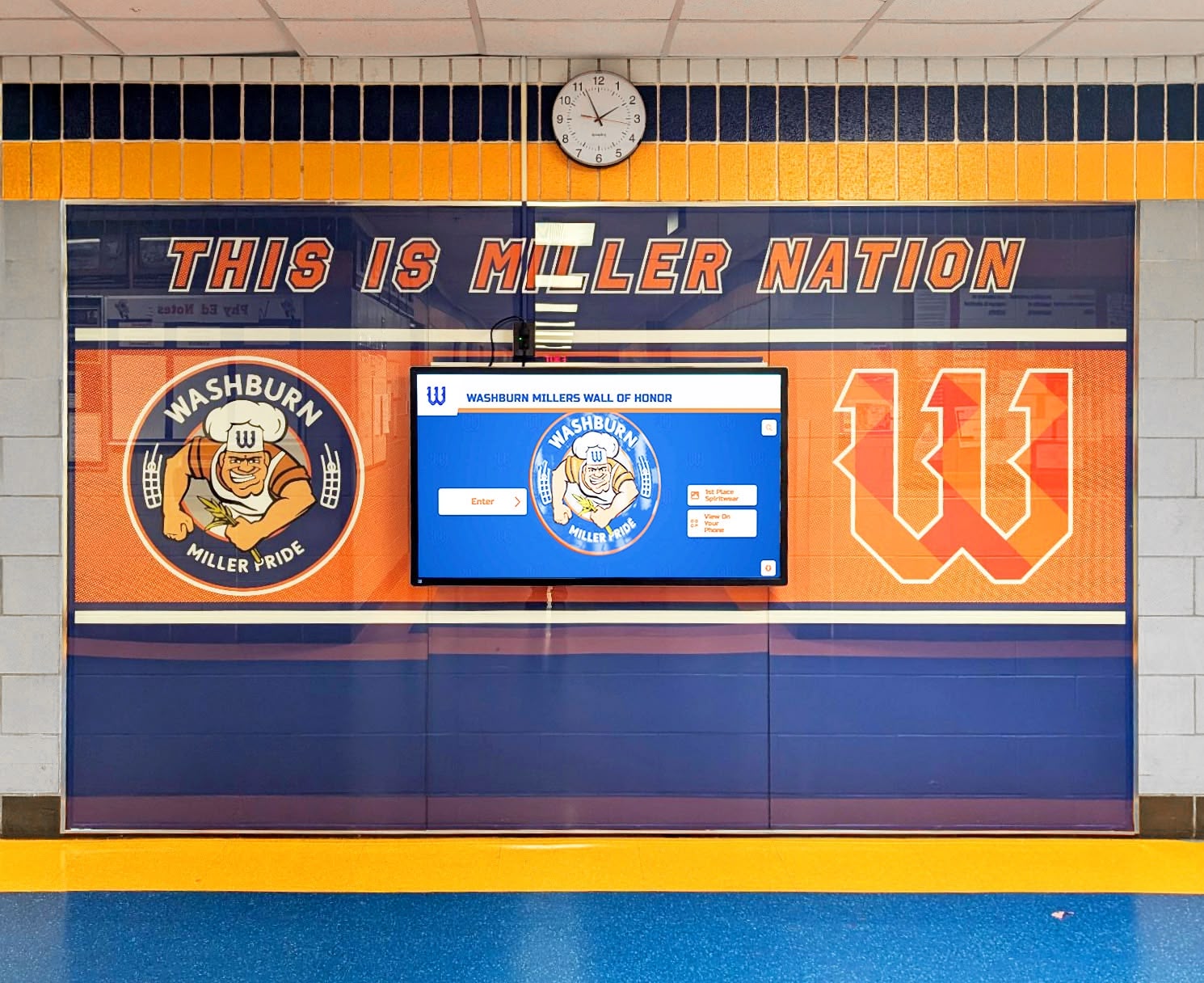
Start your migration journey today by conducting a comprehensive content audit, identifying priority content requiring digitization, and exploring recognition platforms designed to make migration manageable and sustainable. Your institution’s history deserves preservation, and your community deserves engaging access to the achievements and stories that define your legacy.
